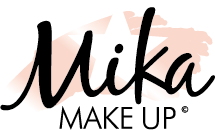The Colour of Beauty
Believe it or not, this image is historic. May 2015 marks the date that Rihanna was named the face of Dior. In the video advertising campaign which has gone viral, we see the glamorous, majestic and glittering icon sweeping through the chateau of Versailles. As she turns to face the camera you suddenly realise….. she’s BLACK.
Truly groundbreaking imagery since this is the first time a black woman has represented the brand to date.
Dior, like many established cosmetic companies has long been seen as a brand that is marketed towards a general caucasian audience. In fact most brands have a clear focus on providing skin tone foundations from fair to medium but not venturing out to anything beyond a ‘tanned’ caucasian tone. In terms of naming colours, this stops at Medium Melted Caramel.
Being a Medium Melted Caramel person myself (or mixed race for an easier term), and married to a Deep Mocha (Nigerian) and blessed with a Hazelnut Honey (mixed race baby), as well as being a makeup artist, has given me the opportunity to experience first hand the frustrations that black women deal with when it comes time for selecting makeup.
The beauty world is still very limited in its’ representation of black women and that begs the question whether it is discriminating.
Professional makeup artist brands such as MAC, Make Up Forever, and Face Atelier have all long been riding on the ‘All Races’ surfboard, and are often upheld as the ‘go-to’ brands for black women all over the world. In the last 5 years, both Lancome and Chanel have also made strides to offer extensive colour ranges in their foundations. However, this forward thinking movement is not seen universally in the beauty industry. In an age where we are encouraged to embrace and celebrate our differences and uniqueness, there is an underlying objective to become a raceless world, where we are no longer limited and defined by our ethnicity. Although on the contrary it seems that brands are most successful when packaged and sold to specific markets based on race.
In France, the number 1 selling ethnic brand is ‘BlackUp,’ which is targeted at black women. The key to the brands success is that it answers to the specific needs of dark skin tones. From my experience as a makeup artist, this is highly credible since the problem most black women face once they have found a brand that offers black foundations, is experimenting with enhancing the undertones within their shade. Its no longer enough for a brand to provide only a mere sample offering of black foundations, but rather have to cater to all the cool and warm tones within the much wider category of ‘black skin tones.’
On a much wider scale, comes the industries brand leaders such as MAC, Bobbi Brown and Nars who offer a single foundation in as many as 50 shades and therefore capturing a very broad spectrum of not just the market but our worlds population skin colour. This holds a true representation of how ethnically integrated the Canadian population is becoming. In fact, 19% of the population identified themselves as a visible minority group. It seems that some brands did their research.
Black women not only spend considerable money on cosmetics but have also been found to spend 80% more on their beauty products.
Trying an endless array of brands in the quest for finding a ‘perfect tone that doesn’t look too ashy, ’ costs money. Yet, many brands are reluctant to take huge steps forward to use black celebrities to endorse and market their products.
It was just over 20 years ago that Cover Girl signed the first black model to an exclusive contract, to represent the brand. Lana Ogilvie was the first black model to front a cosmetic company that was not a brand specifically targeted towards ethnic people. This was the opportunity for others such as Halle Berry for Revlon, Beyonce and Kerry Washington for L’Oreal, and Rihanna, Tyra, Brandy and Queen Latifah for Covergirl. These are bold public statements that not only increase brand awareness but also align the brand with current, and somewhat trendy, changing racial demographics and cultures.
Now all thats left is for all brands to catch up. And maybe get some real dark beauty celebrities to front their brand. How many years will that take?
By Mika Holborow





